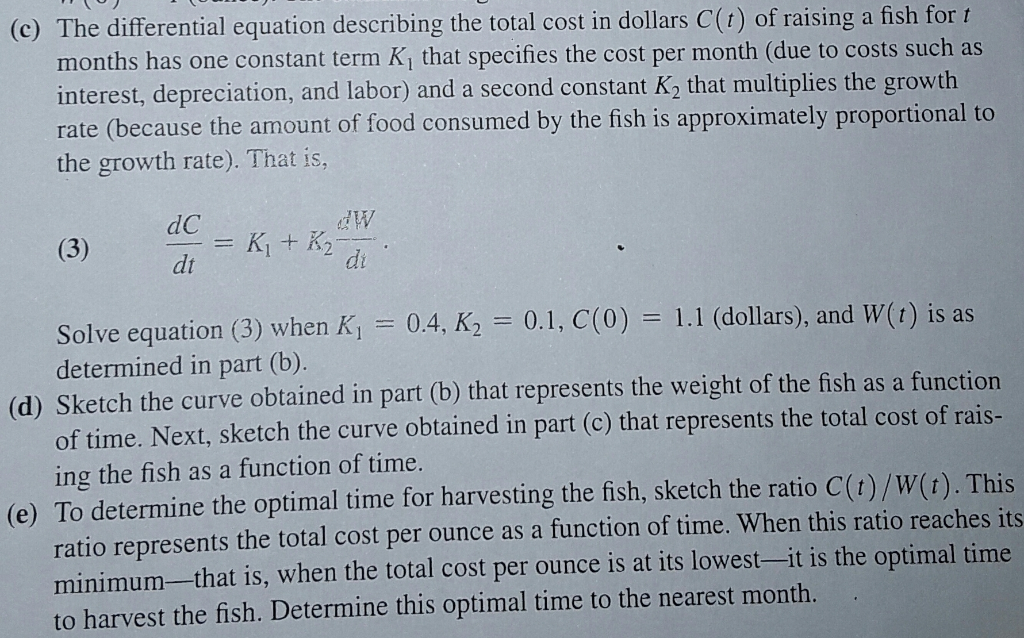
(c) The differential equation describing the total cost in dollars C() of raising a fish for months has one constant term Ki that specifies the cost per month (due to costs such as interest, depreciation, and labor) and a second constant K, that multiplies the growth rate (because the amount of food consumed by the fish is approximately proportional to the growth rate). That is, dC dW dt di Solve equation (3) when Kl = 04, K-= 0.1, C(0) determined in part (b) 1.1 (dollars), and W(r) is as (d) Sketch the curve obtained in part (b) that represents the weight of the fish as a function of time. Next, sketch the curve obtained in part (c) that represents the total cost of rais- ing the fish as a function of time. (e) To determine the optimal time for harvesting the fish, sketch the ratio C(t)/W(t). This ratio represents the total cost per ounce as a function of time. When this ratio reaches its minimum-that is, when the total cost per ounce is at its lowest-it is the optimal time to harvest the fish. Determine this optimal time to the nearest month. (c) The differential equation describing the total cost in dollars C() of raising a fish for months has one constant term Ki that specifies the cost per month (due to costs such as interest, depreciation, and labor) and a second constant K, that multiplies the growth rate (because the amount of food consumed by the fish is approximately proportional to the growth rate). That is, dC dW dt di Solve equation (3) when Kl = 04, K-= 0.1, C(0) determined in part (b) 1.1 (dollars), and W(r) is as (d) Sketch the curve obtained in part (b) that represents the weight of the fish as a function of time. Next, sketch the curve obtained in part (c) that represents the total cost of rais- ing the fish as a function of time. (e) To determine the optimal time for harvesting the fish, sketch the ratio C(t)/W(t). This ratio represents the total cost per ounce as a function of time. When this ratio reaches its minimum-that is, when the total cost per ounce is at its lowest-it is the optimal time to harvest the fish. Determine this optimal time to the nearest month







